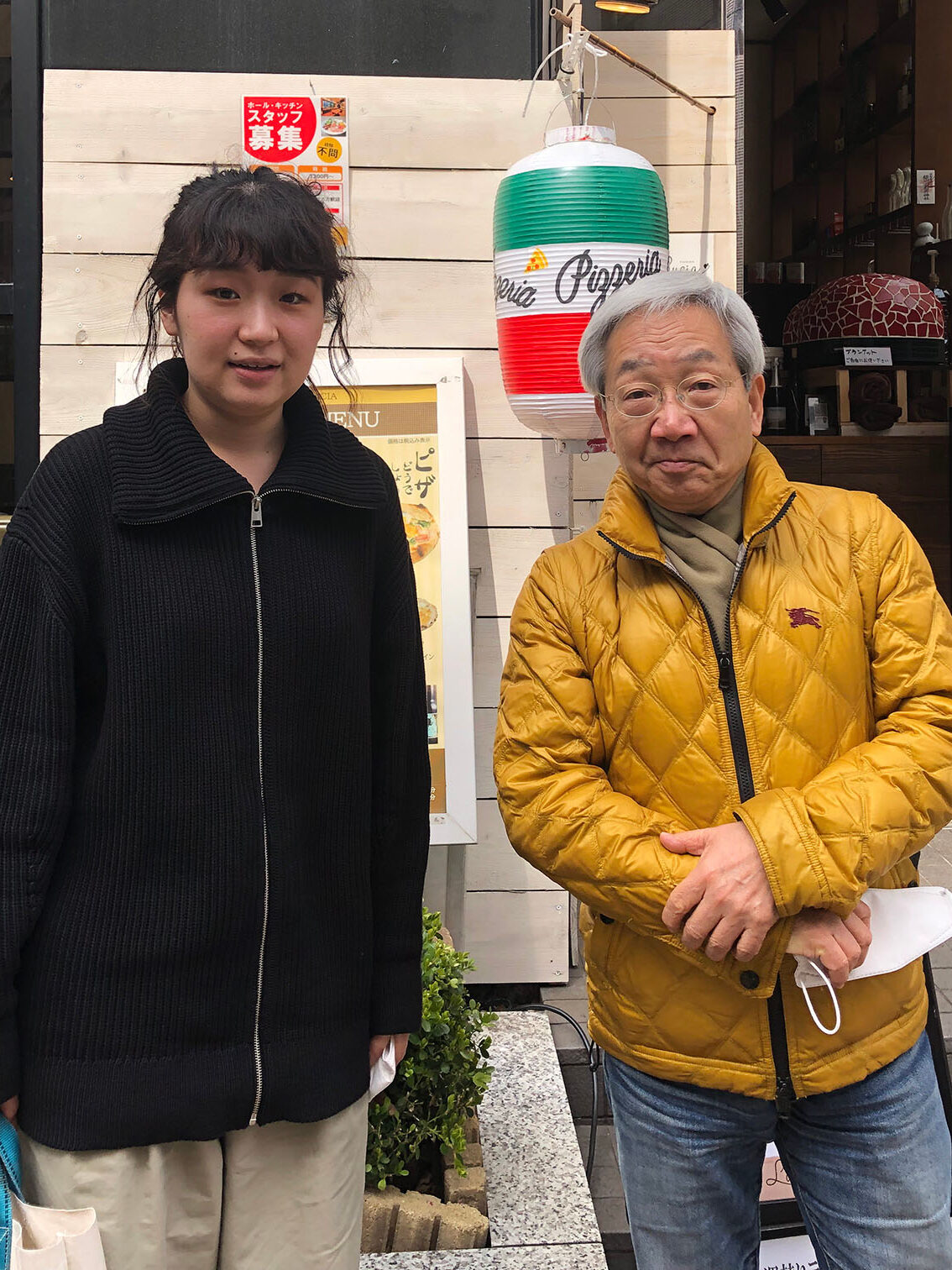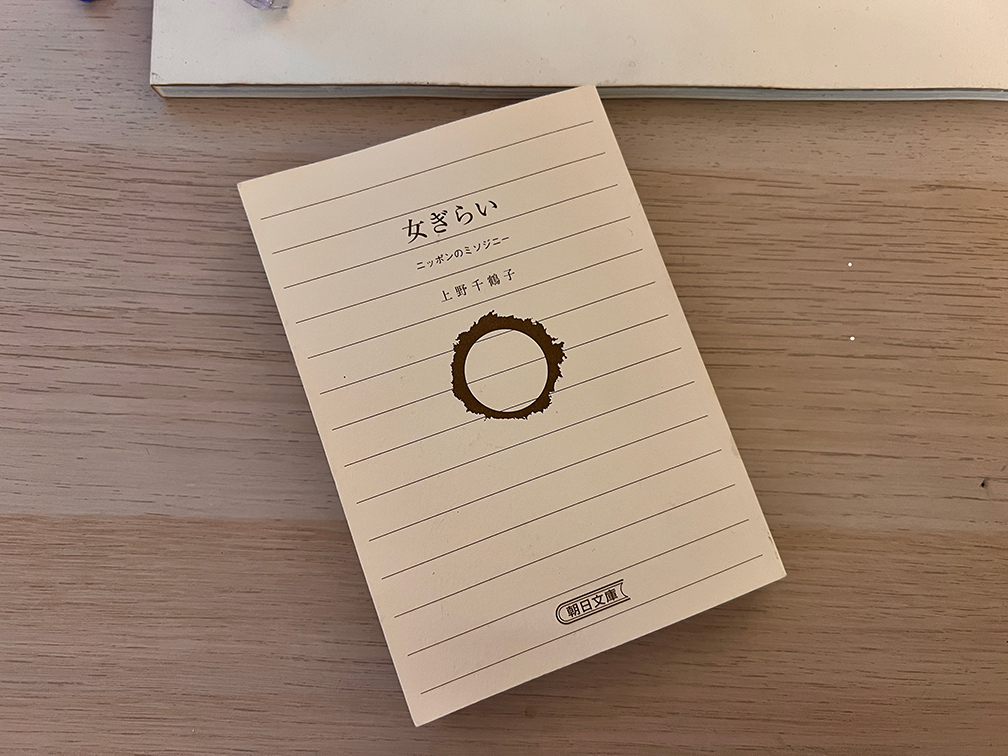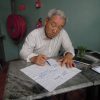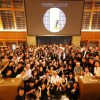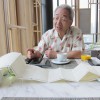Interviewer: Xiaoyi Dong
Dong: Today I’d like to talk about feminism. I recently read the book “ Japanese Misogyny: I hate Women” written by the popular writer, Chizuko Ueno. Even though I was born and raised in China, I can sympathize with many ideas in this book. Have you had the chance to read this book?
Mende: No, not yet. Was it good? Will you please explain misogyny?
Dong: It means to look down on women or a strong hatred towards women. Not only men hating women, but also women hating women. For men it is called misogyny. For women it is self-hate. Ms. Ueno gave a speech at the University of Tokyo that is very popular in China about no matter how hard women work it is unanswered or thankless.
Mende: Why is that?
Dong: In Japan, even if one graduates from a well-known university, gets a good job, and performs well for that company, this kind of strong, independent women is not viewed as adorable or loveable compared to the type of women who needs to be protected by a man, who is even weaker than the independent women in question. This line of thought is not exactly the same in China, but similar. For example, women who have graduated from famous universities such as Beijing University or Tsinghua University are less approachable compared to women who have graduated from other universities.
Mende: Is that right? I don`t think there is this kind of problem in Europe or the US. So are you saying, for men, academic background is a source of pride, but for women, it acts the opposite?
Dong: In western culture this doesn’t seem to be a problem.
Some time ago, there was a problem with a medical university entrance test in Japan. For women taking the entrance test, the standard class curve was much steeper to receive a passing score than for men. This problem just came to light but continues.
Mende: The class curve is only really pertinent for the entrance test, but this is an unfair situation. I also heard that the universities added points to the scores of male students. That is absolutely unacceptable.
Dong: Yes, that is right. I went to Tokyo University of the Arts. The class curve doesn’t really seem to matter there, but there seemed to be fewer female professors. Is the world of art a male-based society? Two years ago, Sputniko! accepted a position to become the first female professor in the college of design, Tokyo University of the Arts. Her portfolio includes several installations based around the theme of feminism and other problems in Japanese society.
Mende: I have the impression that there are many female professors at Tokyo University of the Arts. How come we have different impressions?
Dong: The student body includes many female students though.
Mende: During my time as a student there, for every 30 students there were only 3 female students. This seems to have been flipped.
Dong: I think female students make up over half of the student body.
Mende: Long ago it was hard for women to be accepted to the Tokyo University of the Arts or other Tokyo schools for the arts. That is why the Women`s School of Fine Arts was established. Also, I think the same things happened in the old Imperial University, current the University of Tokyo. From long ago, men especially dominated the fields of sculpture and oil painting.
Dong: I think art schools around the world seem to be a collection of students with diverse ways of thinking, creating a new culture with diversity and fairness.
Mende: I don’t think the world of the arts is narrowed down to either male or female.
The Tokyo University of Arts started with a professor Tenshin Okakura and only hired male professors. There were several active female artists, but they were never invited to be on the faculty. The university was very exclusive and unfair. Art schools of the avant-garde took this stance, but over the years, the faculty started to become more liberal.
Dong: At LPA, there are a lot of women on the staff, maybe half are female.
Mende: Way back, the female staff made up 70%, but male employees are on the raise. However, the high ratio of women is not just LPA, but is pretty common throughout the field of lighting design.
Dong: Yes, I get the impression that there are many women in leadership positions, such as board members and project managers. Do you see a difference between men or women project leaders?
Mende: I don’t think it has to do with gender, but as a person, all personalities are different. Everyone has good and strong points. I don’t see a difference in quality of leadership, either. However, at many companies, especially in Japan, female salaries are lower and there are fewer opportunities. We should not accept this as the norm, but we need to change as a society. In terms of equality between men and women, I am really hopeful about China. Because of the one-child policy, the female population decreased, creating a surplus of men. Now, women have a greater sense of presence, with more say over marriage and Chinese society in general.
Dong: Yes, women have a stronger presence recently.
Inequality still exists in Chinese and Japanese society. I hope all minorities will have more opportunities to shine and be active in society, without concern for gender. Thank you for our talk today.





